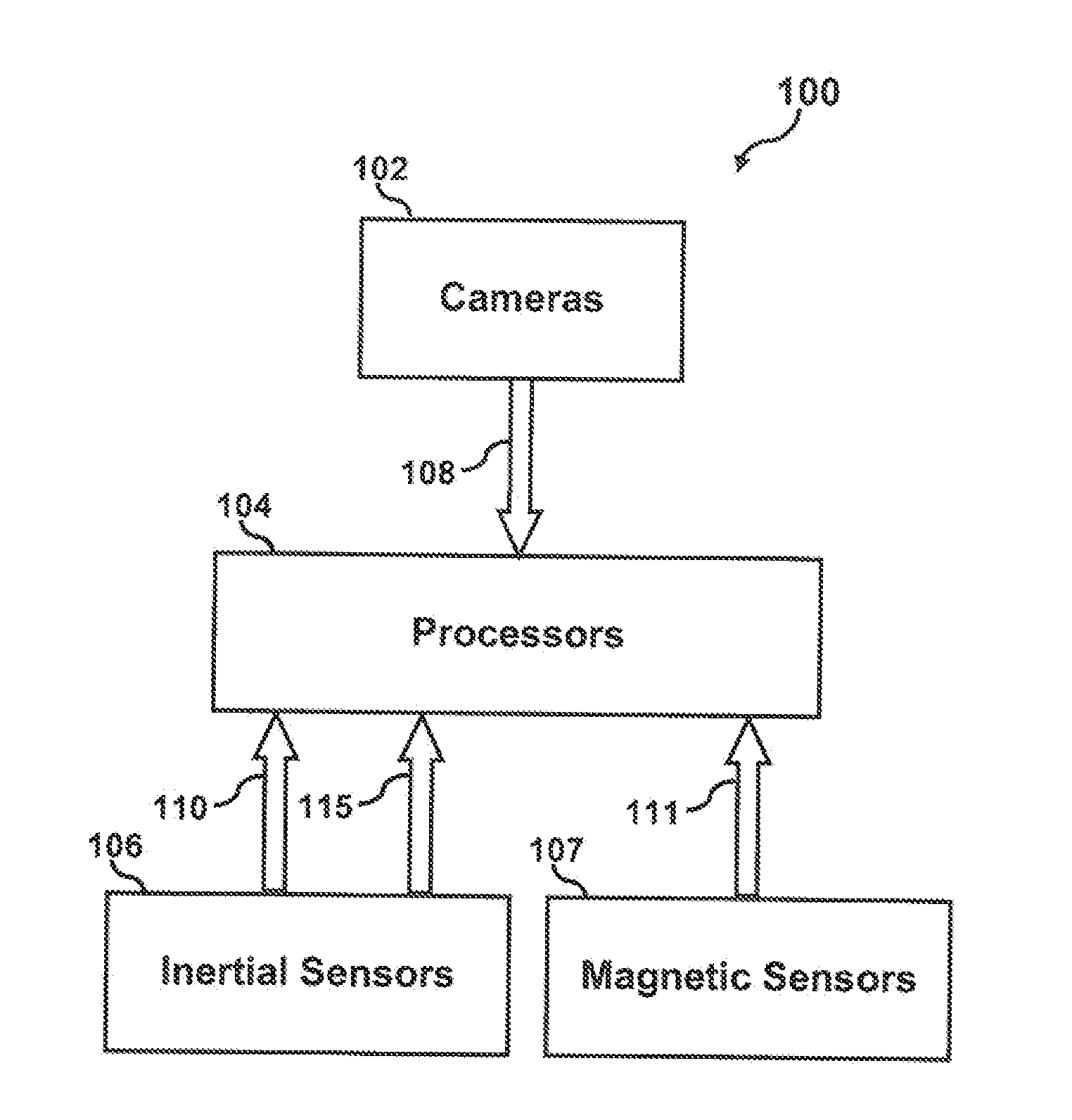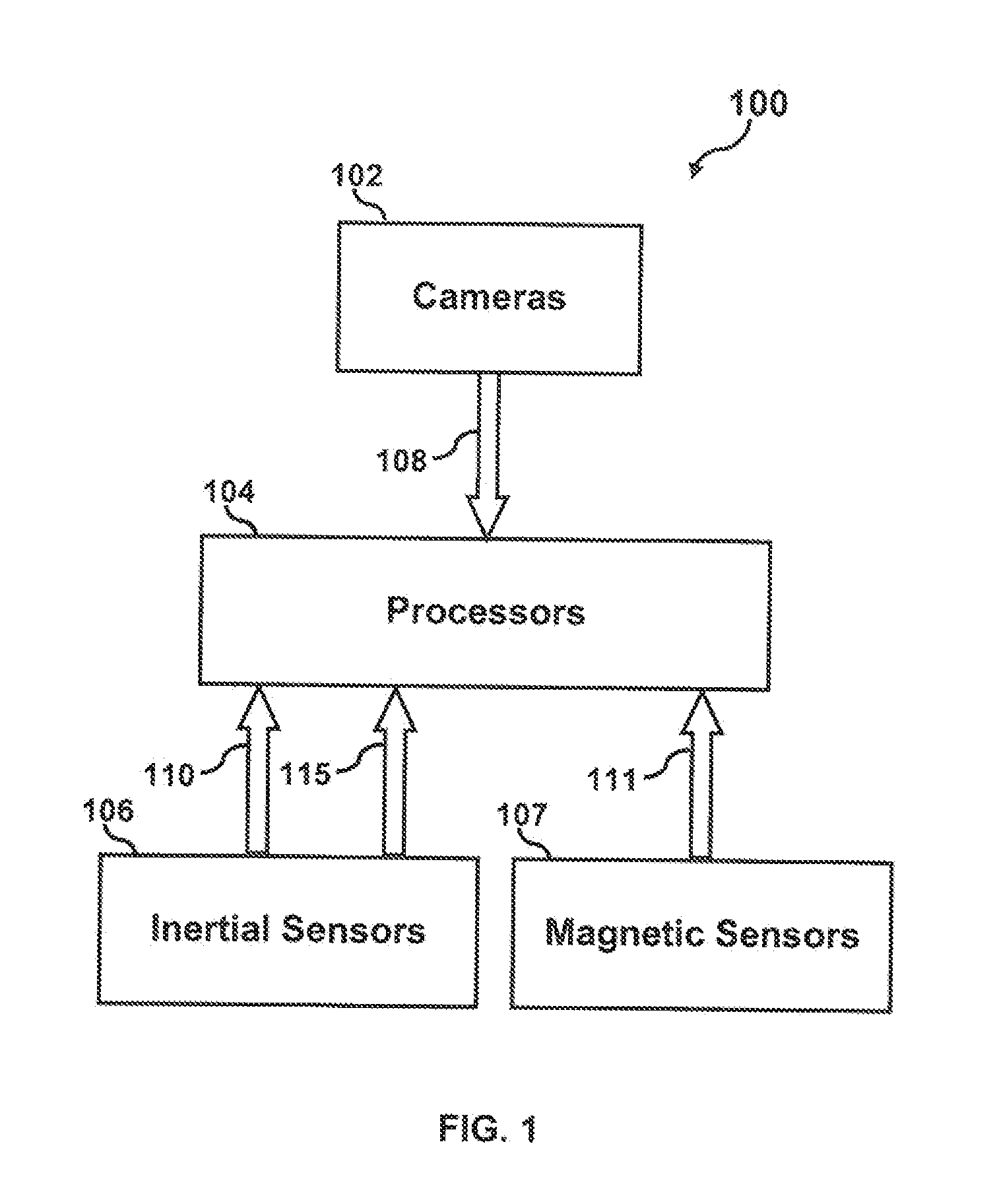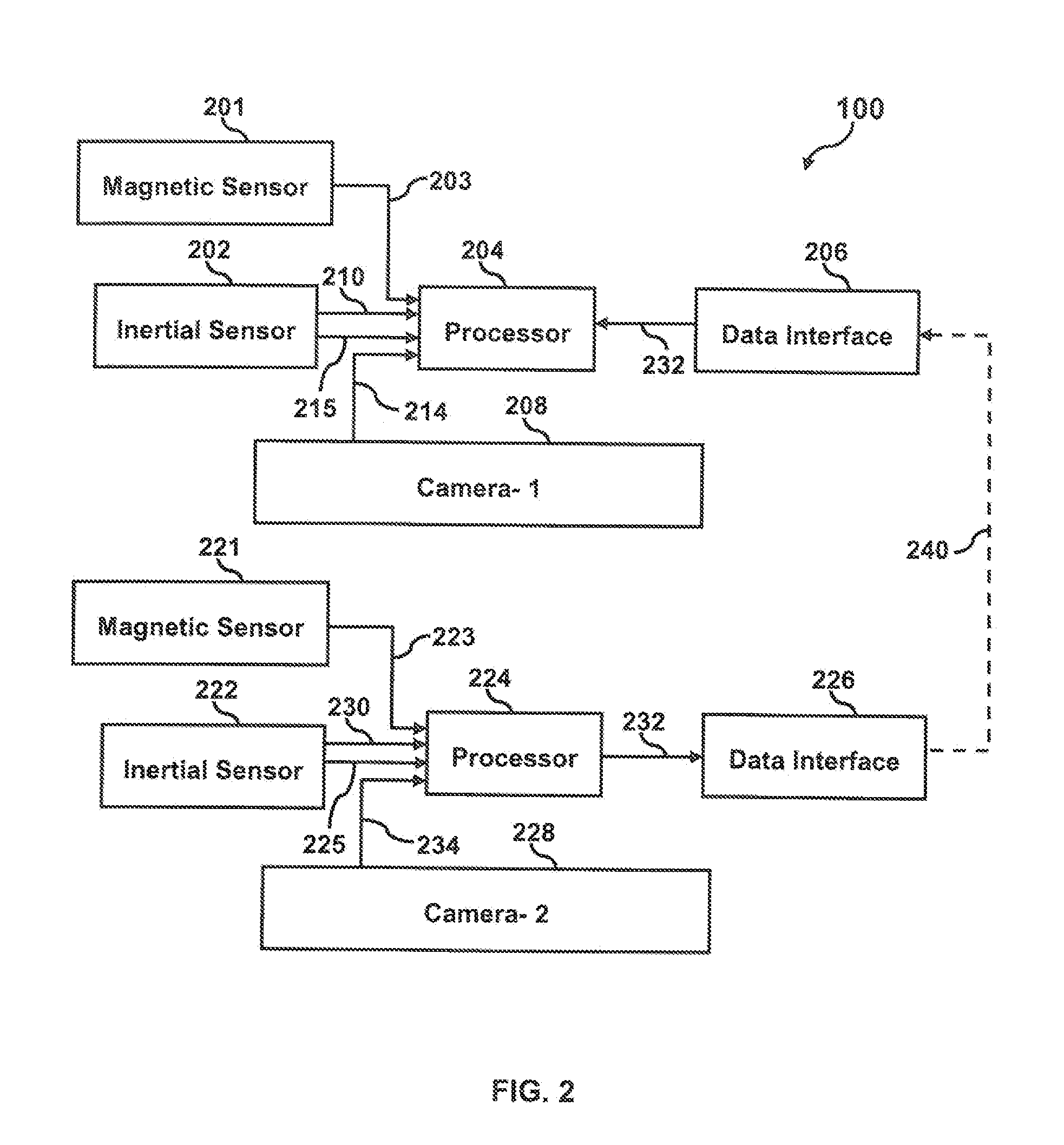System and method for real time registration of images
a real-time registration and image technology, applied in the field of image processing systems and methods, can solve the problems of blurring of video data, abrupt jumps or lags in the final composite image, and the use of only image processing is compute intensive, so as to reduce the chance of false registration, improve tracking, and reduce processing load
- Summary
- Abstract
- Description
- Claims
- Application Information
AI Technical Summary
Benefits of technology
Problems solved by technology
Method used
Image
Examples
Embodiment Construction
[0020]The particular values and configurations discussed in these non-limiting examples can be varied and are cited merely to illustrate at least one embodiment and are not intended to limit the scope thereof.
[0021]The present invention measures the angle rate of change and approximate attitude difference to provide an estimate of the relative rate of change between the two cameras and the approximate attitude difference between the two cameras to reduce the time needed for initial image registration.
[0022]Referring to FIG. 1, a simplified block diagram of a real time image registration system 100 is disclosed. The system 100 includes cameras 102, inertial sensors 106, magnetic sensors 107, and processors 104. The cameras 102 are not mechanically attached and can have different roll, pitch, and, yaw angles. The cameras 102 generate images 108 that have to be registered. The inertial sensors 106 contain gyros which measure the angle rate of change data 110 of each of the cameras 102....
PUM
 Login to View More
Login to View More Abstract
Description
Claims
Application Information
 Login to View More
Login to View More - R&D
- Intellectual Property
- Life Sciences
- Materials
- Tech Scout
- Unparalleled Data Quality
- Higher Quality Content
- 60% Fewer Hallucinations
Browse by: Latest US Patents, China's latest patents, Technical Efficacy Thesaurus, Application Domain, Technology Topic, Popular Technical Reports.
© 2025 PatSnap. All rights reserved.Legal|Privacy policy|Modern Slavery Act Transparency Statement|Sitemap|About US| Contact US: help@patsnap.com



